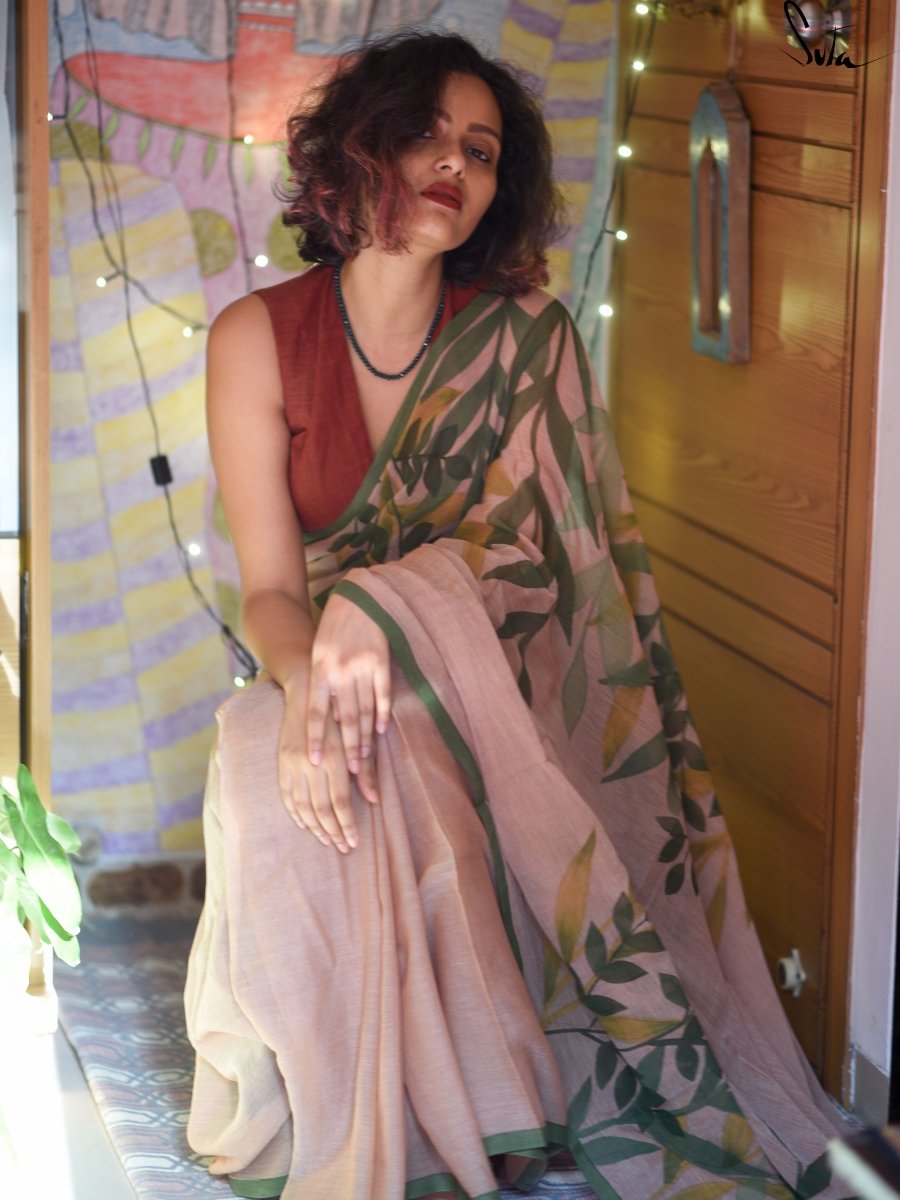
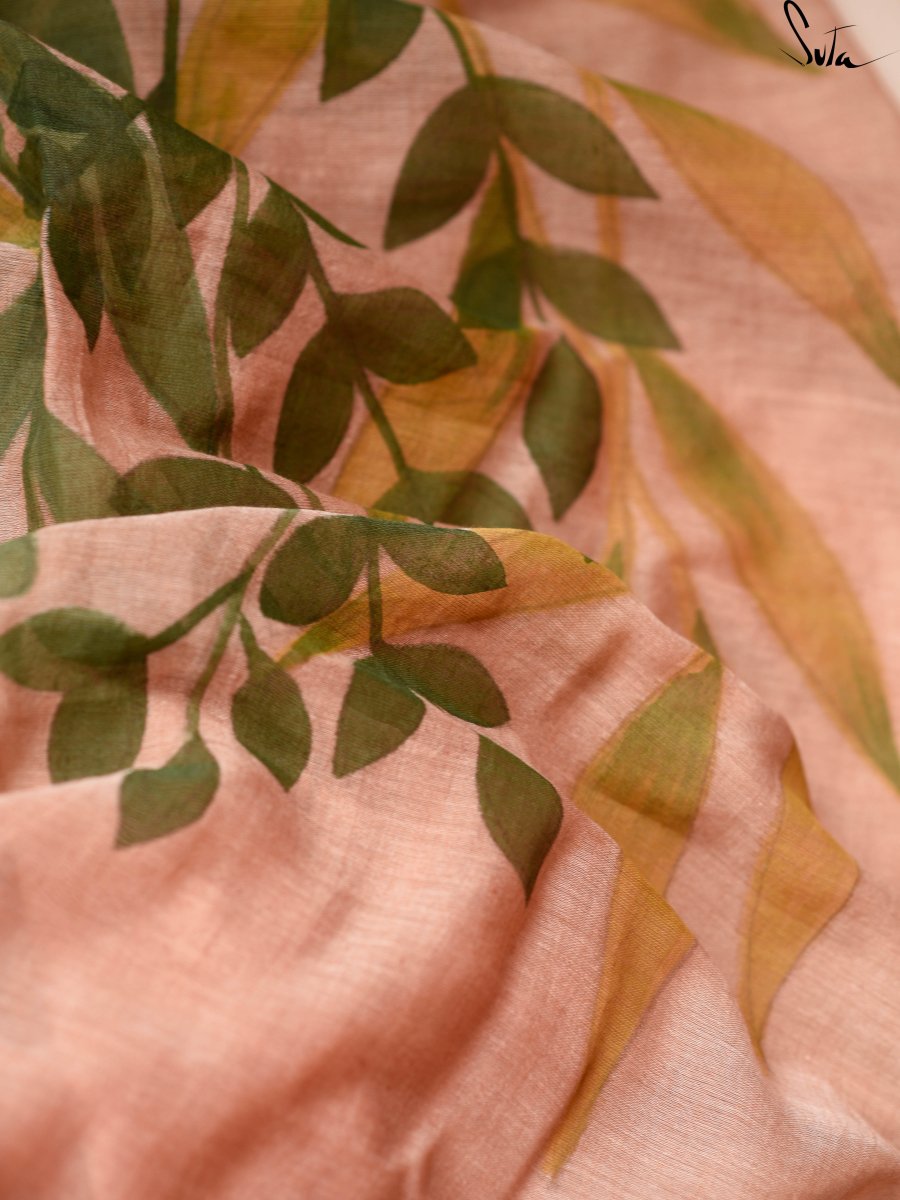
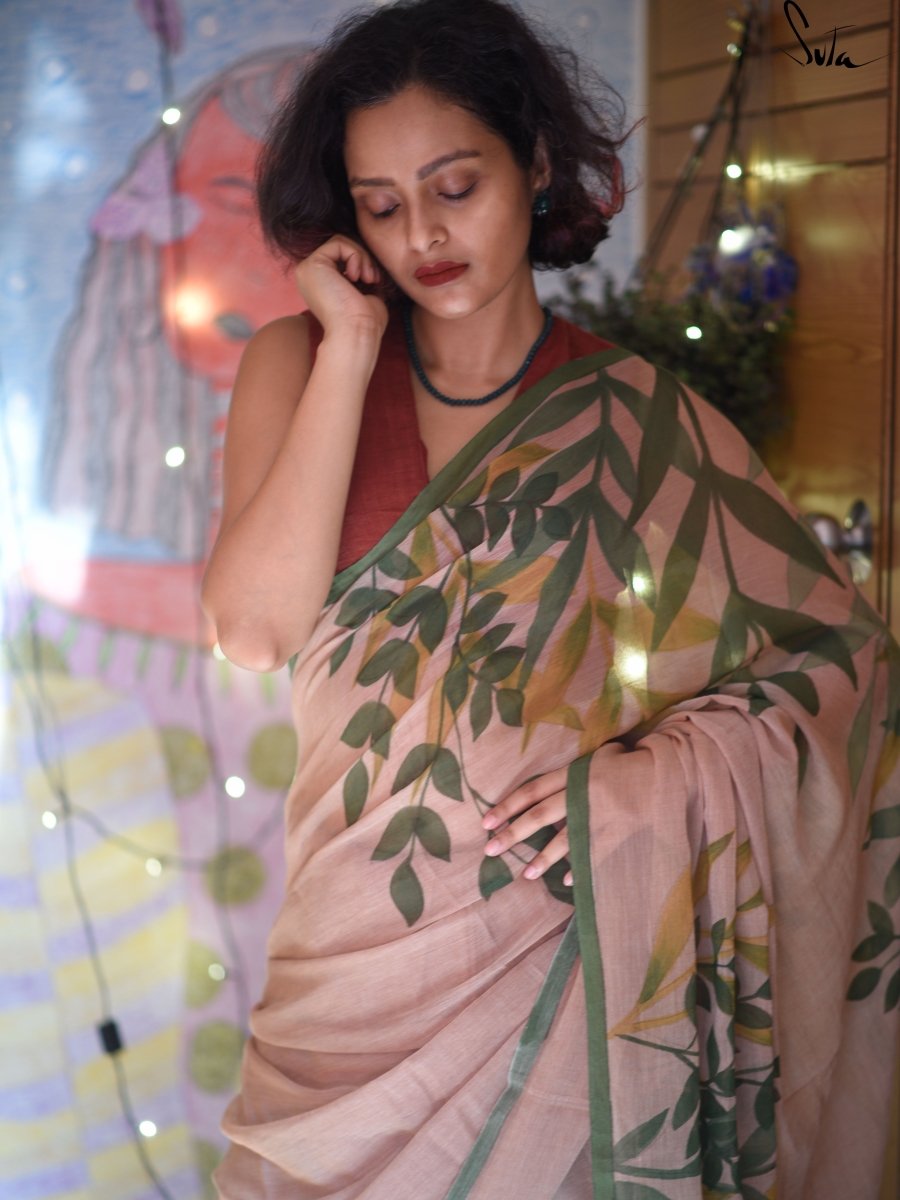
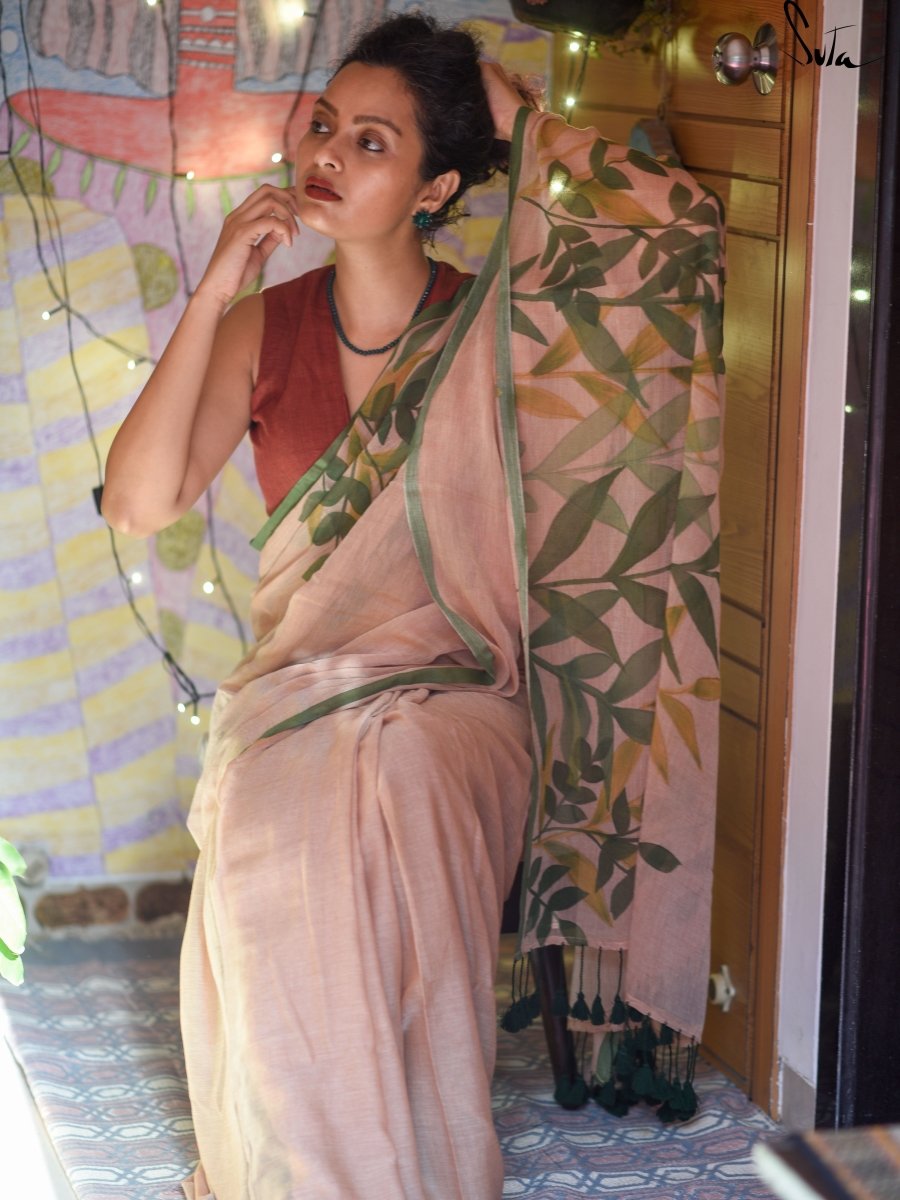
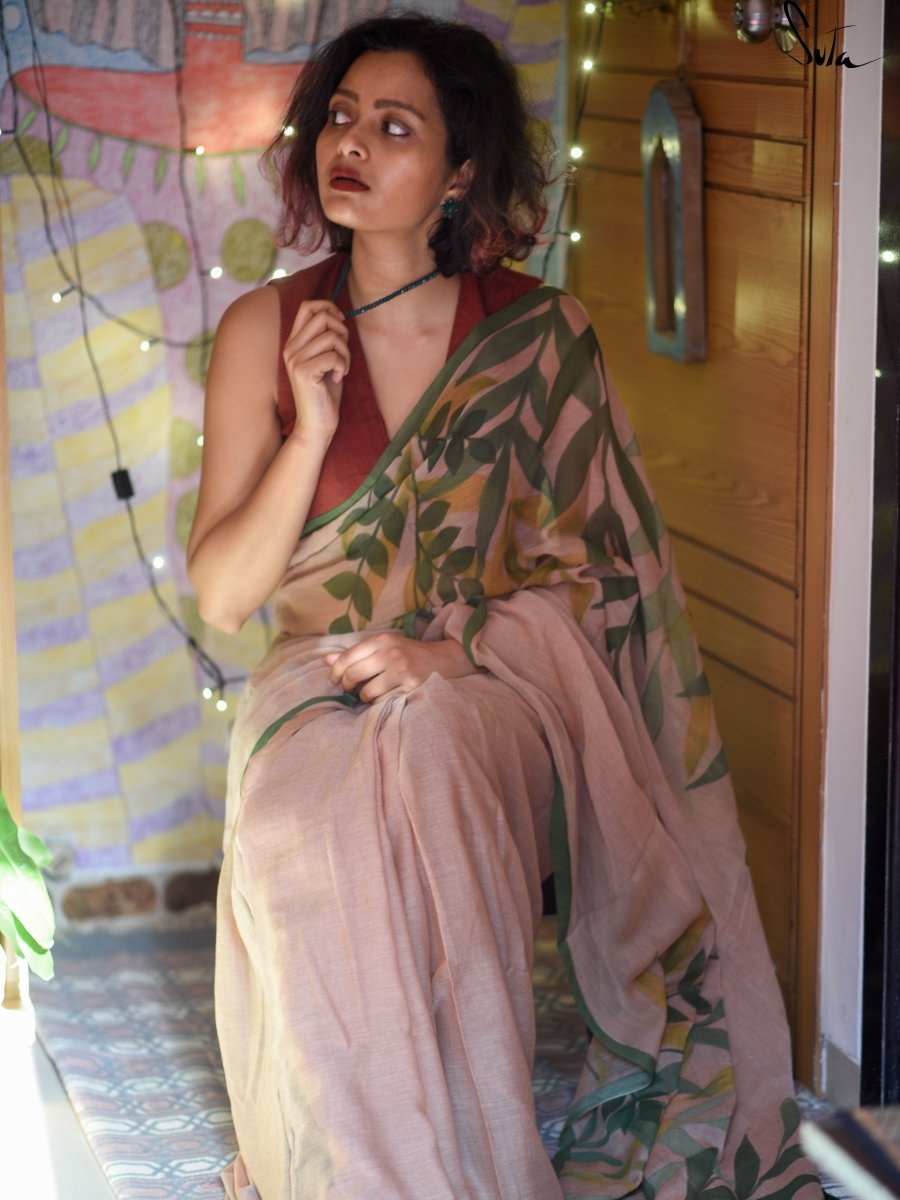
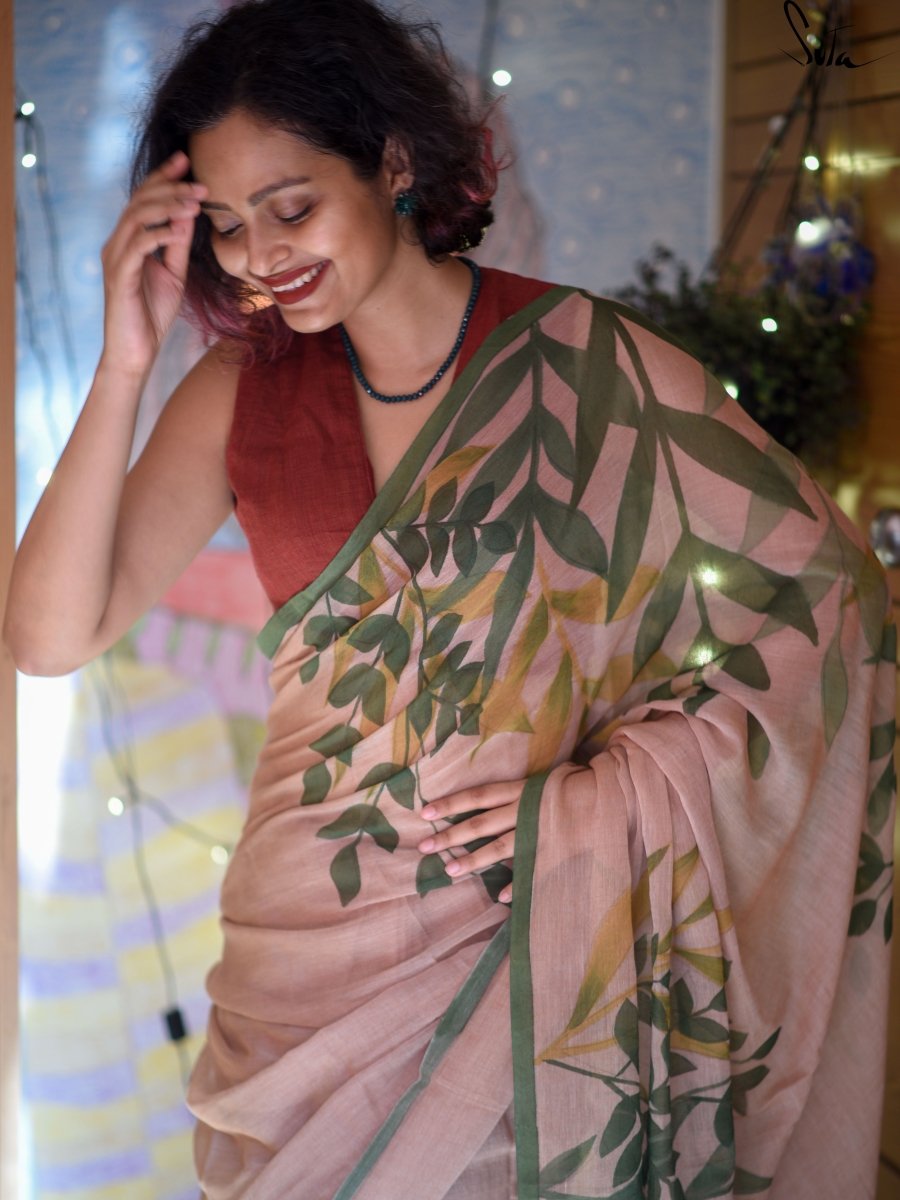
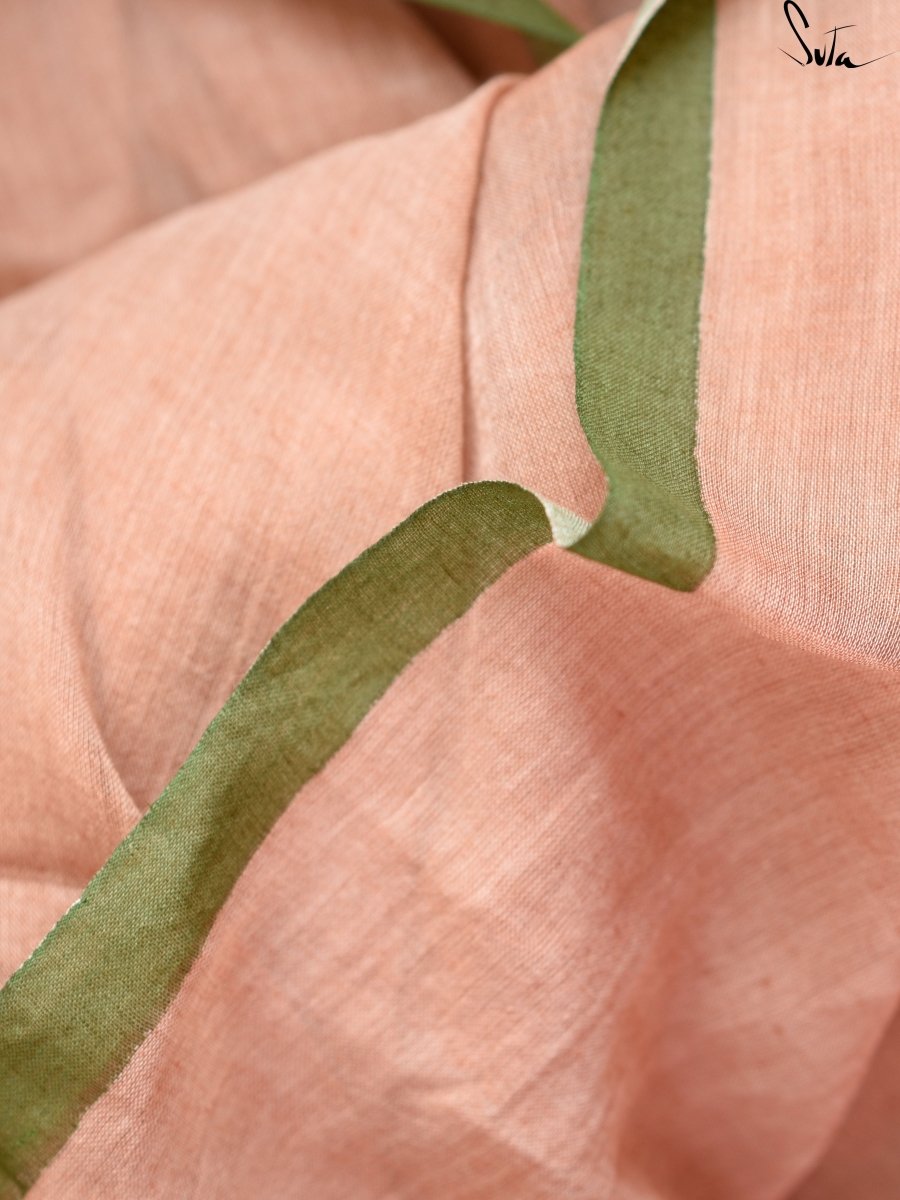
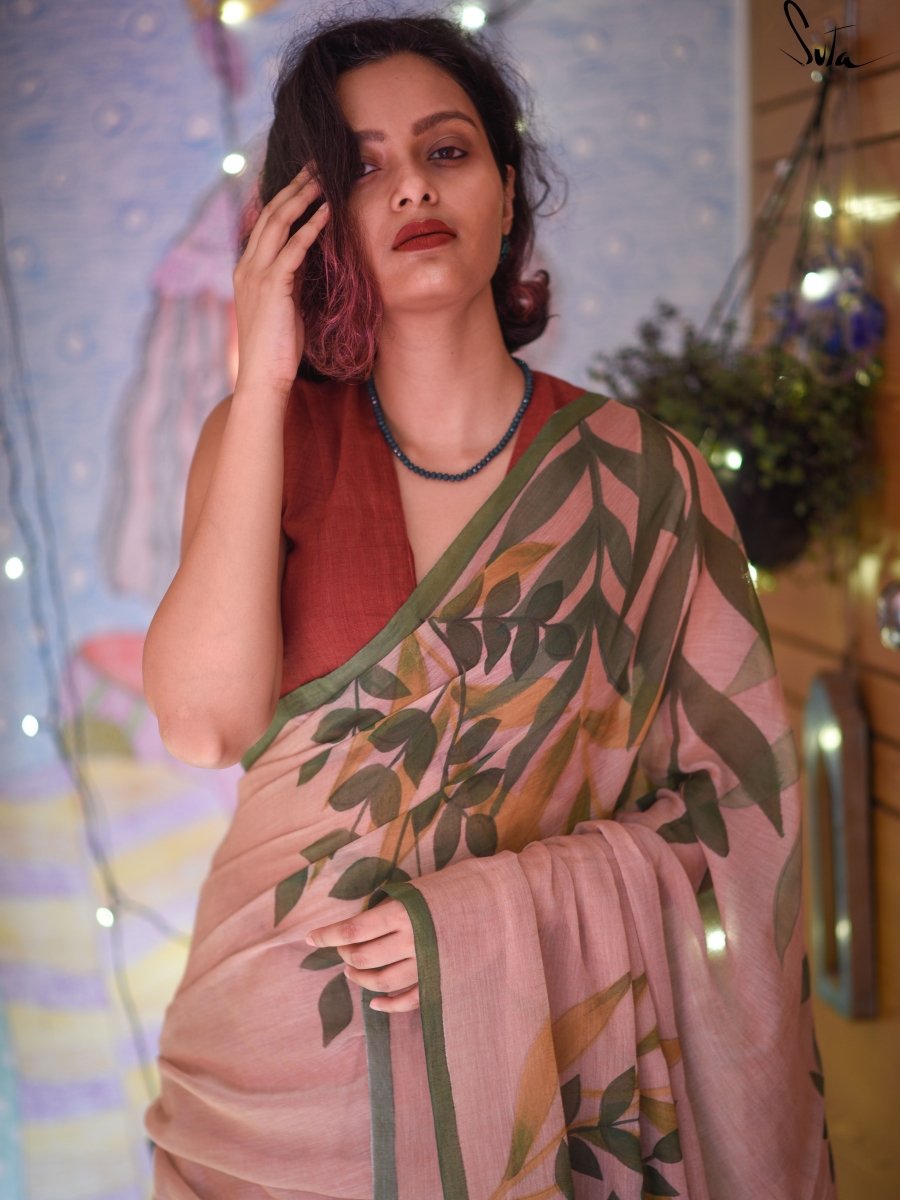
Light Brown Mulmul Cotton Floral Hand Painted Saree With Tassels
Details
Length: 5.50 m (550.00 cm) ; Width: 1.19 m (119.38 cm)
Blouse Piece: No
Wash Care: Dry Wash
Blouse: Su, the model is wearing size S of blouse called Maroon Life
Fabric: Mul Cotton
Disclaimer: The pictures are clicked in daylight. Color may vary slightly from the image due to the screen brightness.
Story
All those confusions, arguments, tears, flop-surprises, movie marathons, giggling fits and all-night phone calls would have a season 2 now. In fact they would have season 3, 4, 5, 6, 7, 8, 9 and more as well. Today was the day that they would become ˜husband and ˜wife, those weird words that they would later laugh at in privacy. As he took her hand in the middle of her favourite patch of swaying bamboos shooting up into the sky, her feet felt light and she felt like she could touch the sky just like they did!
This beige hand-painted made-in-heaven mul drape is a must-have!
Description
Our artists paint with all their hearts to create the hand-painted sarees. First, the painting is created with a pencil and water colours and once it is finalised, it is made on a live-sized paper and sent to artisans in villages. These artisans keep this as a reference and paint the final painting on the fabric in a free-hand technique. The softest Mul fabric becomes the perfect canvas for this art and these sarees make a statement like no other. There are bound to be some irregularities here and there and no two products will look absolutely the same. This is the beautiful allure of hand-painted art.
The mul cotton is what we call ˜made in heaven at Suta. Known in West Bengal as mul mul, the fabric is what can be categorised as muslin cotton. It is believed that this fine method of weaving cotton can be traced back to even before the Indus valley civilization. What makes this fabric special is the almost magical process of weaving it. Cotton fibres are separated and spun into strong threads. The lightest and the most delicate fibres are separated and are then spun into muslin thread. These are then woven into fabrics by skilled weavers. The history of muslin weaving is a beautiful chapter in the history of Indian textiles. The process of the yore was much more complex and involved many unique tools that look primitive but worked like magic. The upper jaw of a catfish was used to initially clean the cotton before spinning. To separate the lightest fibres, a Dhunkar (a bamboo bow) was used, which when strung in a distinctive way made the lighter fibres rise above the heavier ones. This process gave the title ˜woven air to the muslin fabric.
Kindly empty your cart to purchase a Relove product OR checkout with the existing products of your cart and then, shop Relove products.
Choose options








Light Brown Mulmul Cotton Floral Hand Painted Saree With Tassels





